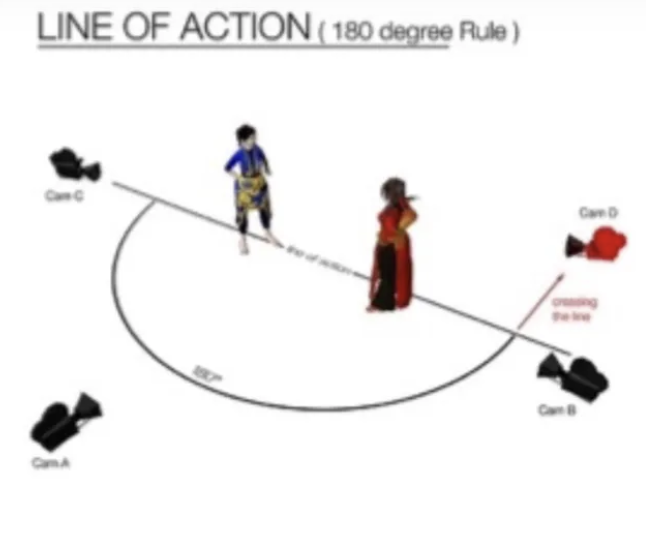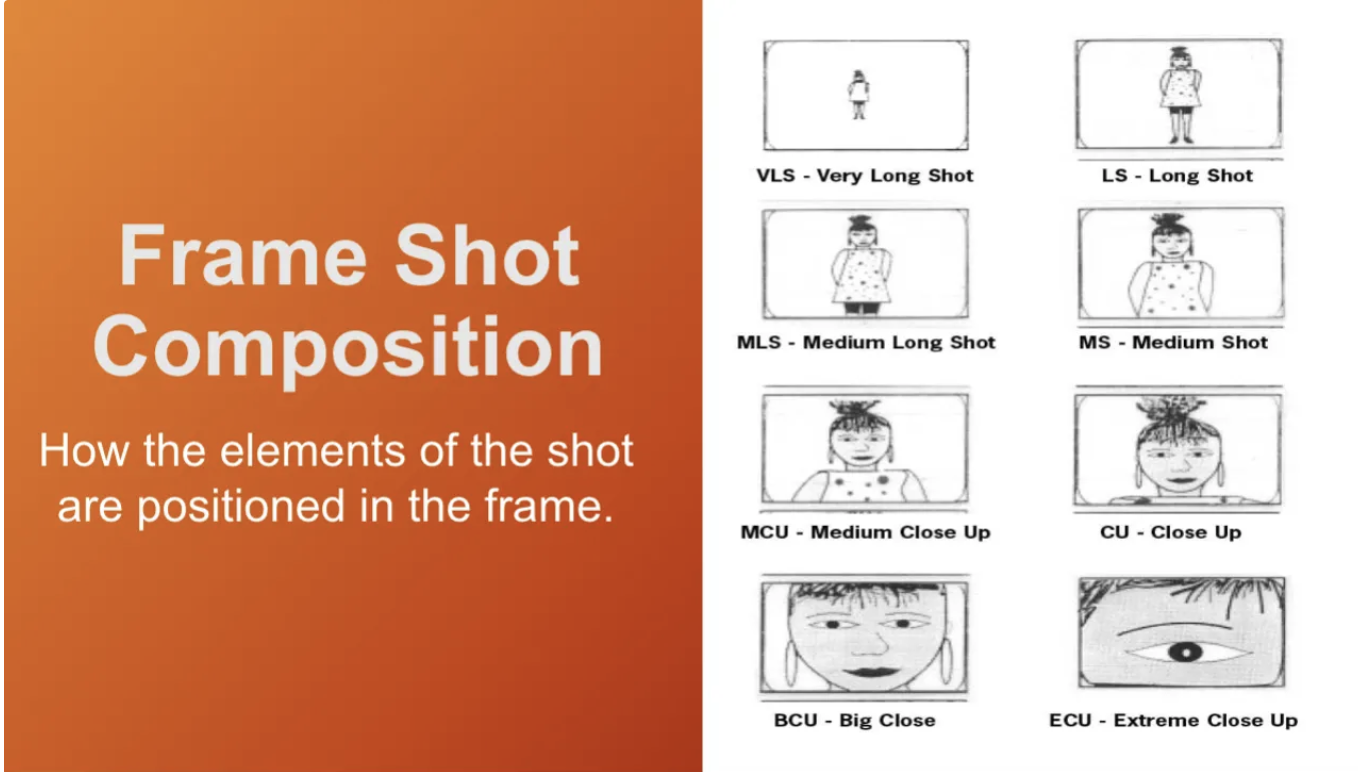film class final
1/8
There's no tags or description
Looks like no tags are added yet.
Name | Mastery | Learn | Test | Matching | Spaced |
|---|
No study sessions yet.
9 Terms
Composition rules (Week 1) – write different 10 rules – 1 point
rule of thirds
The Golden Ratio
Golden triangles and spirals
Rule of odds
Leaving Space
Fill the Frame
Simplification
Balance
Lines
Patterns
180 degree rule (Week 1) – draw 2 characters, line of action and 3 cameras on the right postion – 1 point
this drawing

Frame Shots ( Week 2) - draw 5 different frame size shots- 1 point
these drawings

Editing techniques (Week 3) – write 5 different types of cuts – 1 point
cuts
hard cuts
jump cuts
L-cut
J-Cut
Interview (Week 4) - write 3 different types of interviews – 1 point
Statement
Interview
Confession
Long Single shot (Week 5) – write 3 different types of categories-1 point
Character
Plot
Setting
B- rolls (Week 6)- write 5 different types how b-roll can be used– 1 point
Establish scenes:
Smooth transitions:
Cut out unwanted frames
Add variety:
Tell a better story:
Montage attraction (Weeks 7) – Write 3 different type of montage – 1 point
Metric Montages.
Rhythmic Montages.
Intellectual or Ideological Montages.
Tonal Montages
Overtonal Montages.
Metric Montages.
Rhythmic Montages.
Intellectual Montages.
Tonal Montages
Overtonal Montages.
Pitch Film Story (Week 9)- Write 5 different elements of story structure in pitching– 1 point
Logline: A compelling one- two – three, sentence summary that
captures the core conflict and hook of the story.
• Synopsis: A brief overview of the plot, highlighting the key events
and turning points.
• Characters: A description of the main characters and their
motivations.
• Themes: A discussion of the underlying themes and messages of
the story.
• Target Audience: Understanding the intended audience and what
they would find engaging.
• Uniqueness: Highlighting what makes the story stand out and why it
is worth investing in.
•